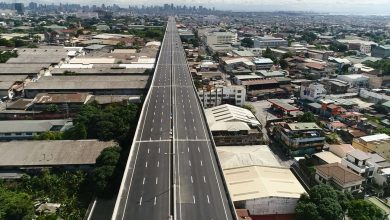
Next Stop: Reviving the PNR
Revival efforts of the country’s oldest train system is building up steam under the Duterte Administration’s “Build Build Build” infrastructure program.
As part of its rehabilitation efforts, the Philippine National Railways (PNR), under the Department of Transportation (DOTr), conducted rehabilitation and maintenance activities at the PNR Samson Road Station last Sunday.
“DOTr-PNR intends to extend the PNR Caloocan-Dela Rosa line up to Samson Road Station in Caloocan City,” said a Facebook post by the DOTr. On August 1, PNR opened the Caloocan to Dela Rosa, Makati line after 20 years of closure.
In conjunction with this, the DOTr has blacklisted contractors involved in a P295.8-million fiasco involving a toilet facility improvement project of the Aquino Administration which recently went viral.
A photo of three toilet bowls without dividers in one PNR station has recently been making rounds on social media. In response to this, DOTr Secretary Tugade signed orders to blacklist iFoundation Builders, Maga Construction & Supplies, V.O. Chupuico, and Wismon Construction & Dev’t Corp. over the failed Kayo ang Boss Ko (KBK) project.
The KBK was part of the Aquino Administration’s infrastructure program in 2012. In a 2017 Commission on Audit (COA) report, it only had a physical delivery rate of only 53.17% as of 2016.
The current administration has pushed several other improvements in the railway system in the past few months.
Last May, the PNR signed a contract with Indonesian government-owned PT Industri Kereta Api (PT Inka), where they will be purchasing three Diesel Hydraulic Locomotive (DHL) trains and four Diesel Multiple Unit (DMU) trains, to be delivered to the Philippines between December 2019 to January 2020.
Present in the signing were PNR General Manager Junn Magno, PR Inka President Budi Noviantoro, DOTr Secretary Arthur Tugade, and Indonesian Minister of State-owned Enterprises Rini Soemarno.
During the signing, Magno said that this is the first time in 40 years that the PNR has purchased new trains using its own budget, after receiving a P3.5 billion budget in 2018.
The revival of the South Line, which stretches from Paco, Manila, to Matnog, Sorsogon, is one of the flagship projects under the “Build Build Build” program. The 683-KM rail line will have nine stations: Paco, FTI, Los Baños, Lucena City, Gumaca, Pili/Naga, Legazpi/Camalig, Sorsogon City, and Matnog.
The PNR is currently an agency of the Department of Transportation, and operates the oldest train system in the Philippines. Inaugurated during the Spanish Colonial Period, it was then known as the Ferrocarril de Manila-Dagupan. It began its operations in November 24, 1892.
It was later renamed to the Manila Railroad Company (MRR) during the American Colonial Period. It became known as the PNR by virtue of Republic Act No. 4156 on June 20, 1964.




